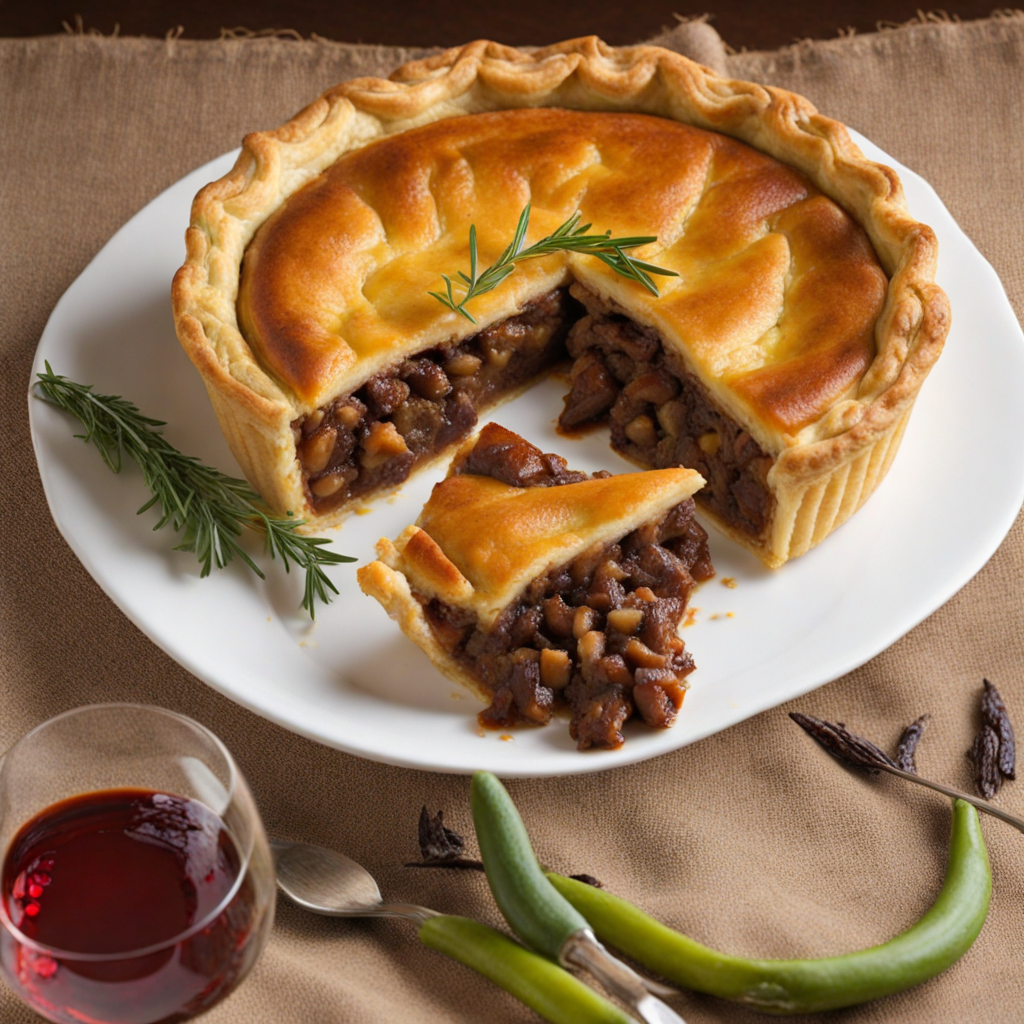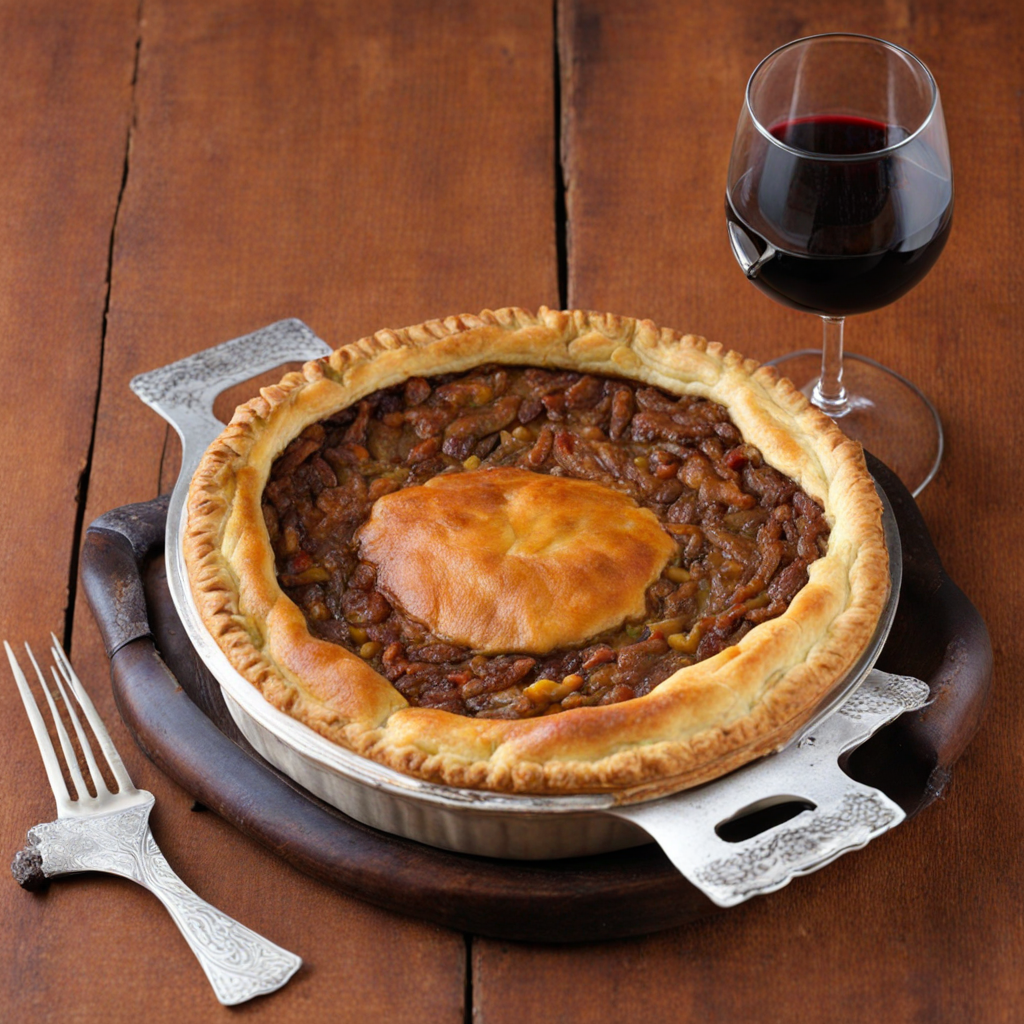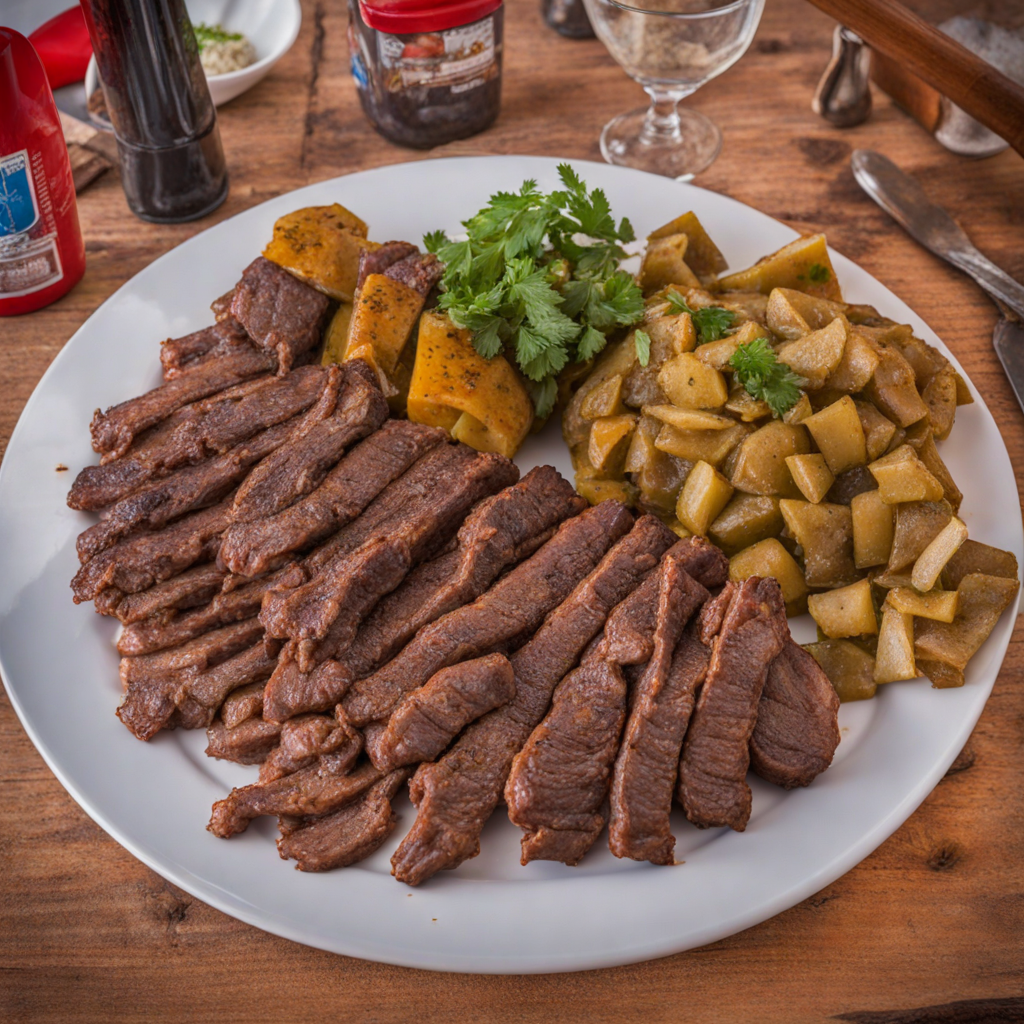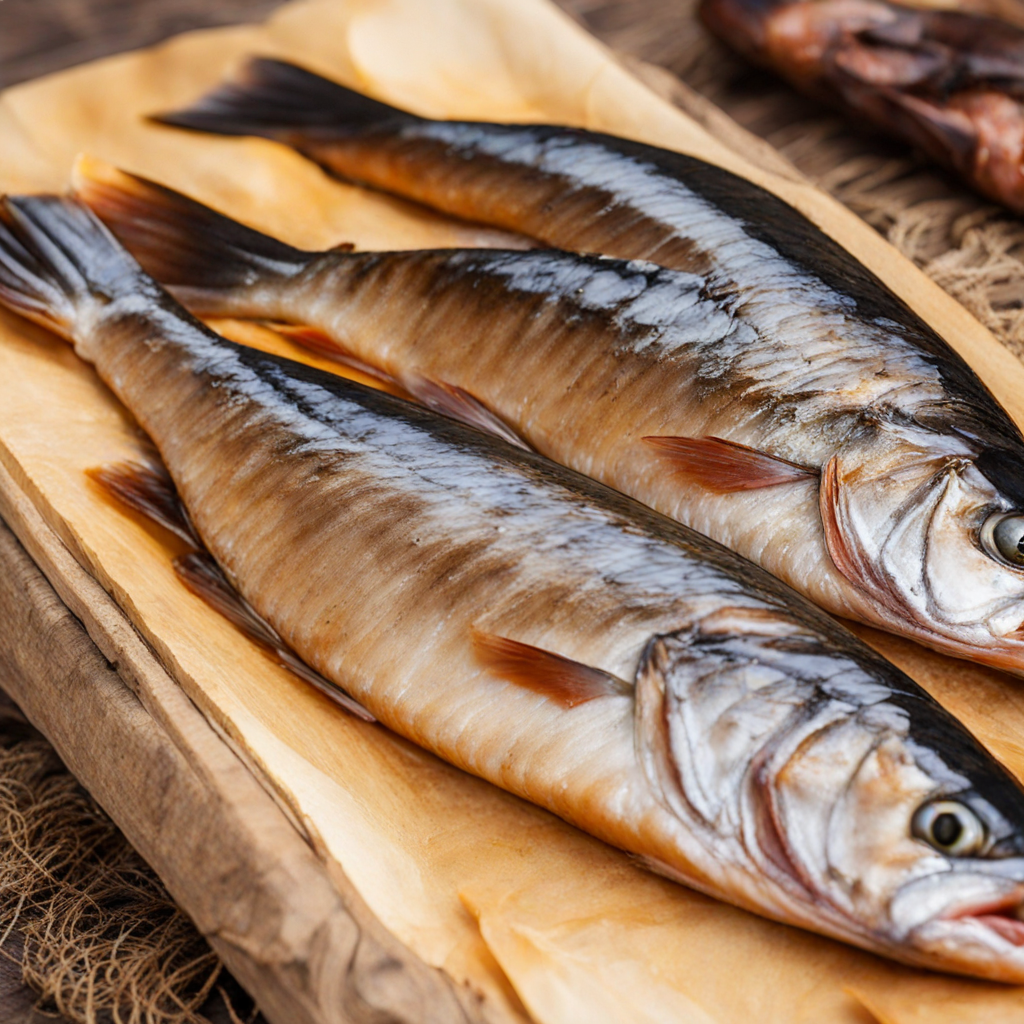Springbok Pie
Springbok Pie is a delightful culinary treasure hailing from Namibia, where the unique flavors of the African landscape come together in one harmonious dish. This savory pie features tender chunks of springbok, a native antelope known for its rich, gamey flavor that is both robust and delicate. The meat is often marinated with a blend of aromatic spices, such as coriander and paprika, which enhance its natural essence and make for a mouthwatering filling. Each bite reveals a juicy, succulent texture that melts in your mouth, inviting you to savor the taste of the wild. The pie is enveloped in a golden, flaky pastry that is perfectly baked to create a satisfying contrast to the rich filling. The pastry is often made with a blend of flour and butter, providing a light yet sturdy base that holds the flavorful ingredients together. Accompanying the springbok meat are typically seasonal vegetables, such as carrots and onions, which add a subtle sweetness and a refreshing crunch. This combination not only adds complexity to the dish but also reflects the diverse agricultural bounty of Namibia. Served warm, Springbok Pie is a comforting dish that embodies the essence of Namibian cuisine. It is often enjoyed with a side of traditional chutney or a fresh green salad, balancing the richness of the pie with vibrant flavors. Whether enjoyed at a local eatery or prepared at home, this dish promises an unforgettable journey for your taste buds, transporting you to the heart of Namibia with every bite.
How It Became This Dish
The History of Springbokpastei: A Culinary Gem of Namibia #### Origins Springbokpastei, a traditional Namibian dish, is a savory pie filled with tender springbok meat, which is a type of antelope native to southern Africa. The name "pastei" is derived from the Dutch word for "pie," reflecting Namibia's colonial history and the influences of its diverse cultural heritage. The history of Springbokpastei is deeply intertwined with the indigenous peoples of Namibia, the early European settlers, and the evolution of the country's culinary landscape. The springbok itself has been an integral part of the Namibian ecosystem and culture for centuries. The Khoisan people, the earliest inhabitants of the region, relied on the springbok for sustenance, utilizing its meat, hide, and bones for various purposes. As Namibia transitioned through various colonial periods, including German colonial rule from the late 19th century to World War I and later South African administration, European culinary practices began to merge with indigenous traditions. This fusion laid the groundwork for the emergence of dishes like Springbokpastei. #### Cultural Significance Springbokpastei holds a prominent place in Namibian cuisine, symbolizing both the land's abundant natural resources and the cultural synthesis that characterizes the nation. It is often served at communal gatherings, celebrations, and family feasts, serving as a culinary representation of togetherness and shared heritage. For Namibians, the springbok is more than just a source of meat; it is a symbol of resilience and adaptability. The animal thrives in the arid landscapes of Namibia, embodying the spirit of the people who have learned to coexist with their environment. The preparation of Springbokpastei involves not just cooking but also storytelling and the passing down of traditions from one generation to the next. This pie not only nourishes the body but also fortifies the bonds of family and community. #### Ingredients and Preparation The preparation of Springbokpastei is an art form that varies between households, with each family adding its unique touch. The essential ingredients include springbok meat, onions, garlic, spices, and a flaky pastry crust. The meat is typically marinated with local spices such as coriander, cumin, and black pepper to enhance its natural flavors. The filling may also include vegetables like carrots and potatoes, adding texture and depth to the dish. The pastry is crafted from a blend of flour, butter, and water, rolled out to create a light and flaky crust. The preparation process often becomes a communal affair, with family members gathering to assist in preparing the pie. This aspect of socialization is particularly important in Namibian culture, where food is a central element of community life. Once assembled, the Springbokpastei is baked until golden brown, filling the air with an enticing aroma that beckons all to the table. The final presentation of the dish is often accompanied by traditional sides such as chutneys or relishes, enhancing the overall dining experience. #### Development Over Time As Namibia gained independence in 1990, there has been a revival of interest in traditional foods, including Springbokpastei. The post-colonial era has prompted a re-examination of national identity, and food has played a significant role in this discourse. Springbokpastei has emerged not only as a dish of nostalgia but also as a symbol of Namibian culinary heritage that deserves recognition on a broader stage. The popularity of Springbokpastei has transcended local borders, drawing the attention of chefs and food enthusiasts around the world. In recent years, there has been a growing trend of incorporating indigenous ingredients into contemporary cuisine. Chefs in Namibia and beyond have begun to experiment with Springbokpastei, introducing innovative twists while respecting traditional techniques. This evolution has also been influenced by the burgeoning tourism industry in Namibia. Visitors seeking authentic culinary experiences are often drawn to traditional dishes, leading to a revival of interest in local cuisine. Many restaurants and lodges now feature Springbokpastei on their menus, showcasing it as a quintessential Namibian dish. #### Modern Interpretations In the 21st century, Springbokpastei has inspired a variety of interpretations, reflecting the dynamic nature of culinary arts. Some chefs have embraced fusion cuisine, incorporating elements from global gastronomies while maintaining the essence of the original dish. For instance, variations may include the use of different meats or the incorporation of international spices, offering a modern twist that appeals to diverse palates. Furthermore, the rise of sustainable dining practices has also influenced the way Springbokpastei is prepared and served. With a growing emphasis on sourcing locally and ethically, many chefs prioritize the use of wild game that is sustainably hunted, promoting a connection to the land and its resources. This movement not only honors traditional practices but also aligns with global trends towards environmental consciousness. #### Conclusion Springbokpastei is more than just a dish; it is a rich tapestry woven from the threads of Namibia's history, culture, and community. From its origins among the indigenous peoples to its place in contemporary Namibian cuisine, Springbokpastei serves as a testament to the resilience and adaptability of the nation. As it continues to evolve and inspire new generations, this savory pie remains a beloved symbol of Namibia's culinary heritage—a delicious reminder of the land's bounty and the stories of its people. In a world that often prioritizes fast food and convenience, the slow, deliberate preparation of Springbokpastei invites us to pause and appreciate the intricate relationship between food, culture, and identity. As the world becomes increasingly interconnected, dishes like Springbokpastei remind us of the importance of preserving culinary traditions and celebrating the unique flavors that define our shared human experience.
You may like
Discover local flavors from Namibia







